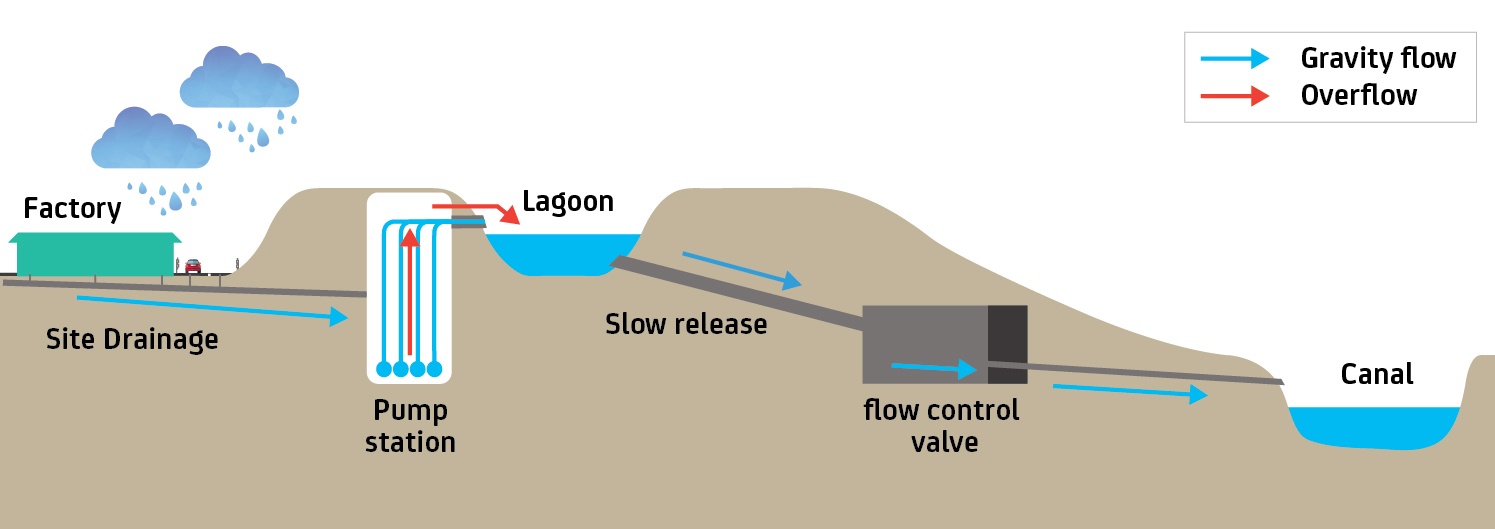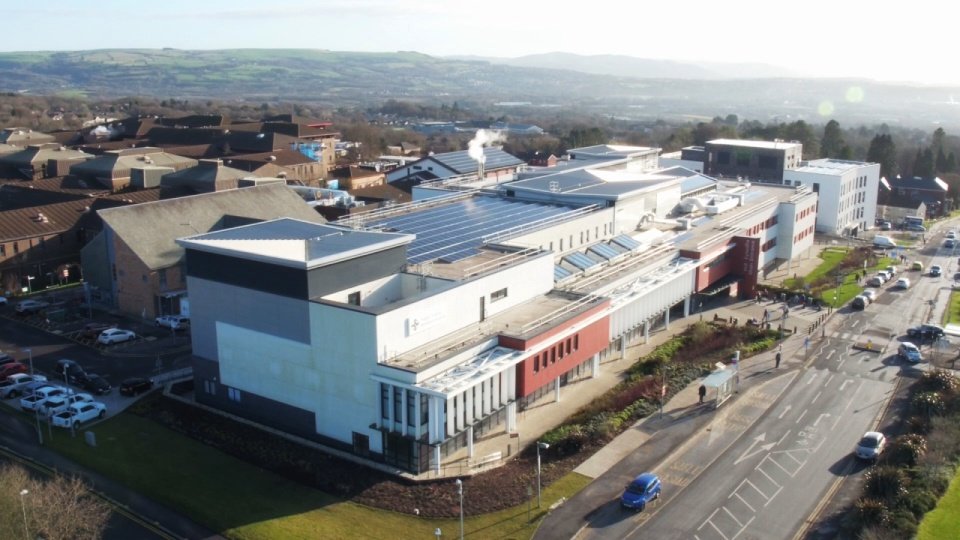Table of contents
- Chemical Removal
- Benefits and Drawbacks of Chemical Removal
- Biological Removal
- Benefits and Drawbacks of Biological Removal
- Physical Removal
- Benefits and Drawbacks of Physical Removal
- Choosing the Right Method for You
Whilst phosphorus is a crucial element to several sectors, most notably agriculture, its harmful effects on water and the natural environment are well-documented.
There are several ways of removing phosphorus from wastewater. The most effective method depends on the infrastructure of the treatment facility, the effluent phosphorus level, whether wastewater is rich in white or red phosphorous, and the project budget.
Below we’ve listed three of the most common removal methods, the benefits and drawbacks of each, and how Dutypoint can help you to reduce wastewater phosphorus.
Chemical Removal
Also known as chemical phosphorus removal or primary phosphorus removal, chemical precipitation can remove inorganic phosphates by introducing coagulation (the process of transforming soluble water into a gel-like substance) to wastewater. Phosphates create precipitates (insoluble solids that emerge from solid solutions) with metal ions. They’re then removed with sludge in a separation unit.
One of the more common chemical treatment additives is lime, which reacts with the wastewater’s natural alkalinity to create calcium carbonate and increase the water’s pH.
Once the wastewater’s pH value has exceeded 10, calcium ions will react with the phosphate and precipitate (transfer a dissolved substance into an insoluble solid separate from the liquid) as hydroxyapatite (a calcium phosphate).
This reaction occurs between the lime and the alkalinity of the wastewater. Therefore, the quantity of lime required will be independent of the amount of phosphate in the water, instead of depending on the wastewater’s alkalinity and pH levels. The overall lime dosages needed can be measured as 1.5 x the alkalinity of calcium carbonate (CaCO3).
Once chemical precipitation has been completed, the wastewater may need to be neutralised to lower pH levels before any additional treatments and dispersal.
| Benefits | Drawbacks |
|---|---|
| Chemical phosphorus removal is highly effective, and requires fewer polymers
It is one of the most cost-effective phosphorus removal treatments, especially in the short-term Phosphates of a wide range of pH values can be comprehensively removed, especially when compared to traditional coagulants |
A chemical phosphorus removal system may cause chemical sludge reuse or disposal to be more difficult
Sewage decomposition or organic waste material can, in some cases, re-release phosphorus The chemical feed system, cost of chemicals, and base structure mean that chemical phosphorus removal is a costly investment |
| Benefits |
|---|
| Chemical phosphorus removal is highly effective, and requires fewer polymers
It is one of the most cost-effective phosphorus removal treatments, especially in the short-term Phosphates of a wide range of pH values can be comprehensively removed, especially when compared to traditional coagulants |
| Drawbacks |
| A chemical phosphorus removal system may cause chemical sludge reuse or disposal to be more difficult
Sewage decomposition or organic waste material can, in some cases, re-release phosphorus The chemical feed system, cost of chemicals, and base structure mean that chemical phosphorus removal is a costly investment |
Biological Phosphorus Removal
Also known as secondary phosphorus removal, biological removal effectively filters phosphorus from wastewater by removing bacteria in its cell biomass through a process called sludge-wasting.
Biological phosphorus removal processes are commonly used to treat wastewater with low concentrations of phosphorus, like municipal wastewater. These processes absorb bacteria, microalgae, and plants, removing phosphorous in the process.
Moreover, biological phosphorus removal is applied on a global scale in optimised configurations of conventional activated sludge (CAS) treatments, with the process being completed at a treatment plant.
Phosphate-accumulating organisms (PAO) are encouraged to grow and consume phosphorus present within an anaerobic tank to break down organic matter. Air is then circulated to encourage microbial bacteria, which consume the phosphorus.
However, the most efficient way to remove phosphorus from wastewater is enhanced biological phosphorus removal (EBPR), a sewage treatment configuration applied to activated sludge systems to remove phosphates.
| Benefits | Drawbacks |
|---|---|
| Biological phosphorus removal does not require any chemicals, which reduces operational costs Biological phosphorus removal does not require any chemicals, which reduces operational costs Less chemical handling and reduced amounts of greenhouse gas emissions mean that biological phosphorus removal is safer for people |
It is a rather complex process, one that’s not ideal for smaller operations In some cases, chemically bonded phosphorus may be difficult to remove, which makes it unlikely that the phosphorous can be extracted for future use |
| Benefits |
|---|
| Biological phosphorus removal does not require any chemicals, which reduces operational costs Biological phosphorus removal does not require any chemicals, which reduces operational costs Less chemical handling and reduced amounts of greenhouse gas emissions mean that biological phosphorus removal is safer for people |
| Drawbacks |
| It is a rather complex process, one that’s not ideal for smaller operations In some cases, chemically bonded phosphorus may be difficult to remove, which makes it unlikely that the phosphorous can be extracted for future use |
Physical Removal
Physical phosphorus removal can be completed independently or alongside biological removal or chemical precipitation. This process uses sand filtration and membrane technologies to separate phosphorus from wastewater and is also known as tertiary phosphorus removal.
Wastewater plants can be retrofitted with particulate phosphorus technology to physically remove phosphorus from wastewater. However, it’s important to remember that retrofitting membrane technologies to wastewater plants is expensive and therefore may not be the best solution for every wastewater plant.
| Benefits | Drawbacks |
|---|---|
| The process is generally better for the environment than chemical or biological alternatives Physical phosphorous removal can be used with either biological or chemical removal to maximise wastewater removal The lack of chemical sludge does not pollute local ecosystems, promoting sustainability |
Sometimes, sand filtration or membrane technologies do not remove enough phosphorus to make the wastewater safe It is not effective in treating less common wastewater pollutants, like pharmaceuticals Sand filtration creates rinse water when cleaned, and this water is heavily polluted, so it must be treated before being disposed of |
| Benefits |
|---|
| The process is generally better for the environment than chemical or biological alternatives Physical phosphorous removal can be used with either biological or chemical removal to maximise wastewater removal The lack of chemical sludge does not pollute local ecosystems, promoting sustainability |
| Drawbacks |
| Sometimes, sand filtration or membrane technologies do not remove enough phosphorus to make the wastewater safe It is not effective in treating less common wastewater pollutants, like pharmaceuticals Sand filtration creates rinse water when cleaned, and this water is heavily polluted, so it must be treated before being disposed of |
Choose the Right Phosphorus Removal Method to Suit You
As you can see, there is no single, right way to remove phosphorus from wastewater. In fact, there are different methods to choose from depending on a range of variables, including phosphorus levels, budget, and whether a long or short-term solution is required.
Contact a member of our specialist team today to learn about phosphorus removal, why Dutypoint is trusted by clients in the UK and abroad, or view our range of innovative, patented fluid technology products.




 Duncan Lewis
Duncan Lewis  18 July 2024
18 July 2024 






